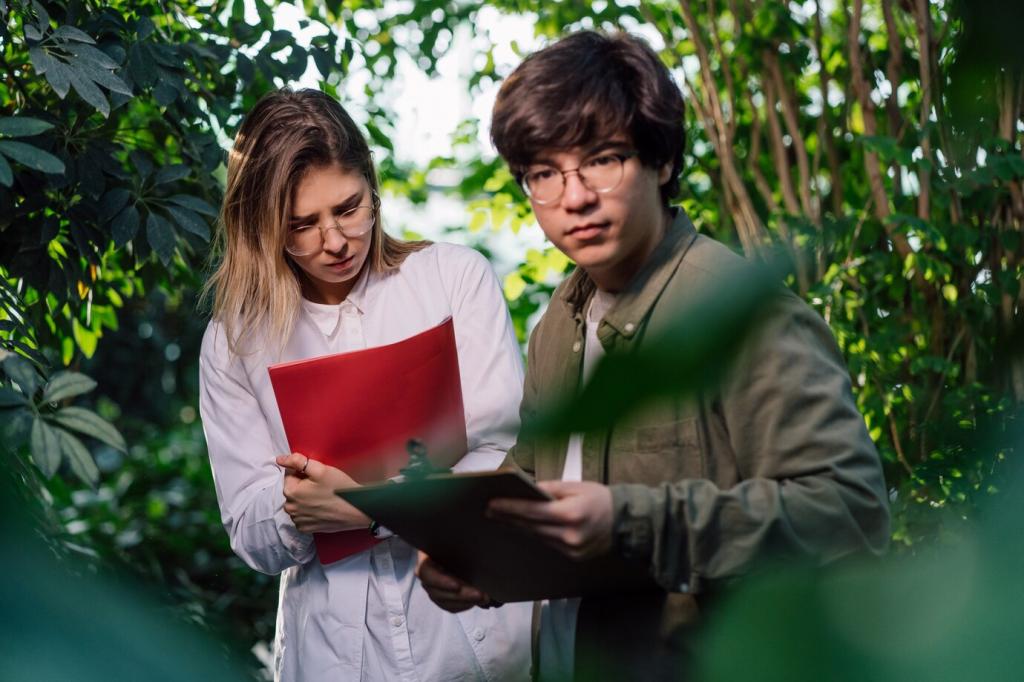Natural Elements in Design: Improving Indoor Environments
In contemporary design, integrating natural elements into indoor spaces has emerged as a powerful strategy for enhancing well-being, productivity, and comfort. By drawing inspiration from the outdoors, designers create environments that not only elevate aesthetic appeal but also contribute to physical and emotional health. This approach, often called biophilic design, acknowledges our innate connection to nature and translates it into architectural and interior solutions. Understanding how natural elements can reshape indoor environments invites us to explore innovative ways to foster harmony between humans and the spaces they inhabit.

The Power of Light and Air
Natural light has the remarkable ability to transform a room, creating a sense of openness, warmth, and vitality. Introducing larger windows, skylights, or glass doors allows daylight to permeate deeper into interiors, reducing reliance on artificial lighting. The presence of sunlight in homes and workplaces is linked to improved mood, better sleep cycles, and enhanced alertness. Designers often position spaces to maximize daylight during peak hours, using reflective surfaces and light materials to disperse illumination. Thoughtful window treatments and shading devices also help manage light, preventing excessive glare while maintaining a visual link to the outdoors. Ultimately, incorporating natural light is not just an aesthetic decision, but an investment in the health of those who use a space.
Clean, fresh air is essential for health and comfort in any indoor environment. Effective ventilation strategies play a critical role in maintaining indoor air quality, removing pollutants, and balancing humidity. Operable windows, transoms, and cross-ventilation provide natural airflow, allowing stale air to be replaced with oxygen-rich outdoor air. Innovations like living walls and indoor plants can further filter toxins, boosting air purity. Architects and designers are increasingly specifying low-emission materials and adopting mechanical systems that mimic natural airflow patterns. By prioritizing ventilation, we foster environments that feel invigorating while reducing the risk of respiratory issues and fatigue.
A seamless transition between indoor and outdoor environments blurs the boundaries of architecture, creating spaces that feel expansive and free. Large openings, folding glass doors, and screened porches invite fresh air and daylight inside while encouraging movement between zones. Visual connectivity—through framed views of gardens or patios—brings ever-changing scenes indoors, providing seasonal variation and visual intrigue. These design strategies not only maximize functional space but also cultivate a deep-rooted sense of relaxation and well-being, echoing the human need for nature within the built environment.
Previous
Next
Incorporating Living Greenery
Indoor plants provide multifaceted benefits, ranging from cleaner air to reduced stress levels. Through the process of photosynthesis, plants increase oxygen levels and absorb carbon dioxide, mitigating the effects of poor indoor air. Certain species, such as peace lilies and snake plants, are especially effective at removing toxins. The act of caring for plants can also offer therapeutic effects, promoting mindfulness and a sense of responsibility. In offices, the presence of greenery has been shown to boost concentration, enhance creativity, and reduce absenteeism. Introducing plant life isn’t simply about decoration—it’s about supporting a healthier and more nurturing indoor environment for everyone.
Natural Materials and Textures
Wood as a Warm and Versatile Element
Wood evokes comfort and timelessness, making it a beloved material across cultures and eras. From exposed beams to hardwood flooring and solid furniture, wood introduces richness and texture that only improves with age. Varied tones and grains offer endless design possibilities, encouraging unique combinations and personal expression. Environmentally conscious designers opt for certified or reclaimed wood, ensuring responsible sourcing. The presence of wood within an interior can regulate humidity and temperature, adding to its practical appeal. Its adaptability and enduring aesthetic make wood a foundation for natural-inspired design that endures changing trends.
The Appeal of Stone Surfaces
Stone brings durability, elegance, and earthiness to interiors, balancing minimalism with organic character. Whether employed as a countertop, wall cladding, or floor, stone’s natural veining and color variations provide visual complexity. Unlike synthetic materials, stone conveys a sense of permanence and rootedness. Its thermal mass can help moderate indoor temperatures, contributing to energy efficiency. Selecting local or recycled stone reduces environmental impact while supporting regional identity. In residential and commercial projects alike, the tactile qualities of stone invite people to slow down and appreciate the sensual experience of touch, grounding the space in a sense of stability and history.
Textiles Inspired by Nature
From woven wool rugs to linen drapery and cotton upholstery, natural textiles imbue interiors with comfort and approachability. These materials regulate temperature, absorb sound, and add layers of color and pattern inspired by the natural world. Textiles with botanical prints or earthy hues further reinforce the biophilic ethos. They age gracefully, acquiring character and patina over time, unlike synthetic alternatives. Designers increasingly prioritize textiles produced with organic fibers and responsible dyeing techniques, further minimizing environmental harm. The use of natural textiles brings a sense of softness and intimacy, encouraging relaxation and the enjoyment of indoor environments on a sensory level.
